Mystery Of The Ancient Double-Headed Eagle Symbol
Angela Sutherland - AncientPages.com - One of the most intriguing and powerful ancient symbols is the mysterious double-headed eagle that has been with us for millennia. It is believed to be one of the world's oldest symbols used by a number of different ancient cultures.
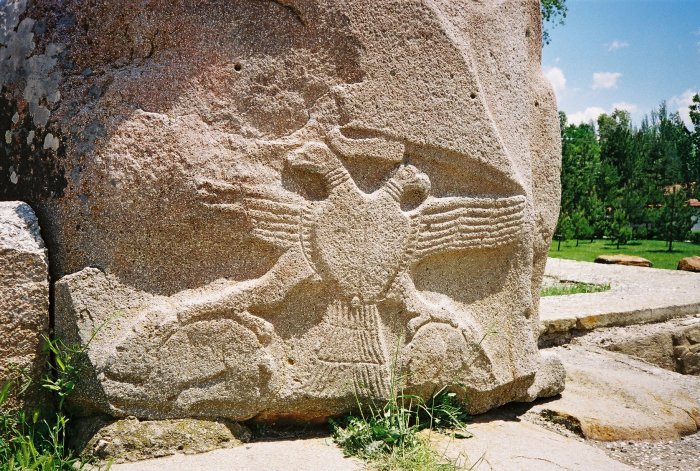
Hittie double-headed eagle. Alaca Höyük city gate, Turkey (1450-1180 BCE). Credit: Earth Before the Flood
The earliest depiction of the double-headed eagle can be found on ancient monuments in central Anatolia in the ancient Kingdom of the Hittites. As an example we can mention, a temple devoted to the priestly rituals dedicated to the cult of the two-headed eagle because the Hittites venerated the double-headed eagle (also known as the Hittite Bird of the Sun) as the King of Heaven.
The bird symbolized the Hittite military power.
At the beginning of the early 19th century, excavations conducted by Charles Texier, in an old Hittite capital (Boğazkale) in modern-day Turkey, revealed cylindrical seals depicting a two-headed eagle with spread wings.
The motif of the double-headed eagle dates back to c. 3800 BC.
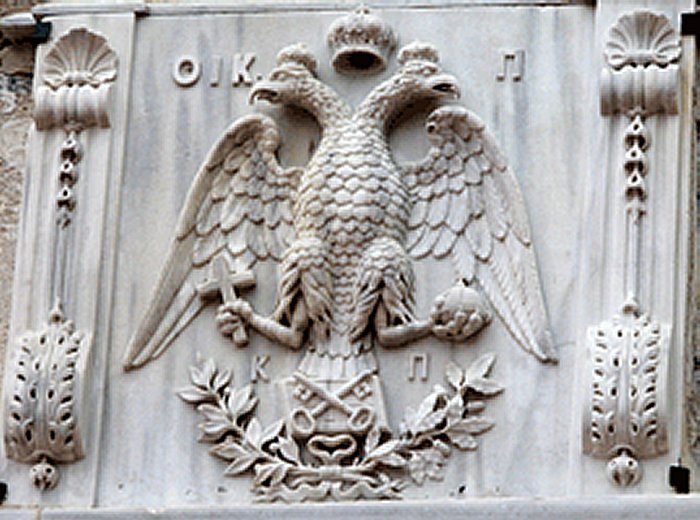
Seal of the Ecumenical Patriarchate of Constantinople. Image source
The bird also appears in Lagash, an ancient Sumerian city, and was the symbol for Ninurta, son of Enlil, and god of the city.
The prominent Assyriologist, M. Thureau Dangin writes that a French archaeologist, M. de Sarzec found in the unearthed ruins of a temple, two cylindrical seals. One of these has upon it the recitation of a King, who says:
"The waters of the Tigris fell low and the store of provender ran short in this my city." He goes on to tell that this was a visitation of the gods. He, therefore, submitted his case to the divinities of the land. He dreamed, as a result, a holy dream in which there came to him a divine man whose stature towered, (as that of a mighty god in Babylonia should) from earth to heaven and whose head was crowned with the coronet of a god surmounted by the Storm Bird, "that extended its wings over Lagash and the land thereof." (source)
The double-headed eagle, however, is not restricted to supporting deities, and also appears supporting human figures. This is an indication of the use of the eagle as a personal (or family) symbol.
"...long before Moses found Yahwe and declared him the God of Isra-El (the God who Strives), and before this god absorbed all his predecessors and forbade their recognition, a similar duad had arisen among the Hittites, whose storm god Teshup was represented two gods, and whose symbol was a double-headed eagle. Thereafter no Hittite temple or palace was complete without a conspicuous carving of the doubly potent bicephalous bird..." wrote Bro. Arthur C. Parker.
According to many historical opinions, this symbol was very popular among several ancient civilizations, which took the opportunity to use it as their own symbol.
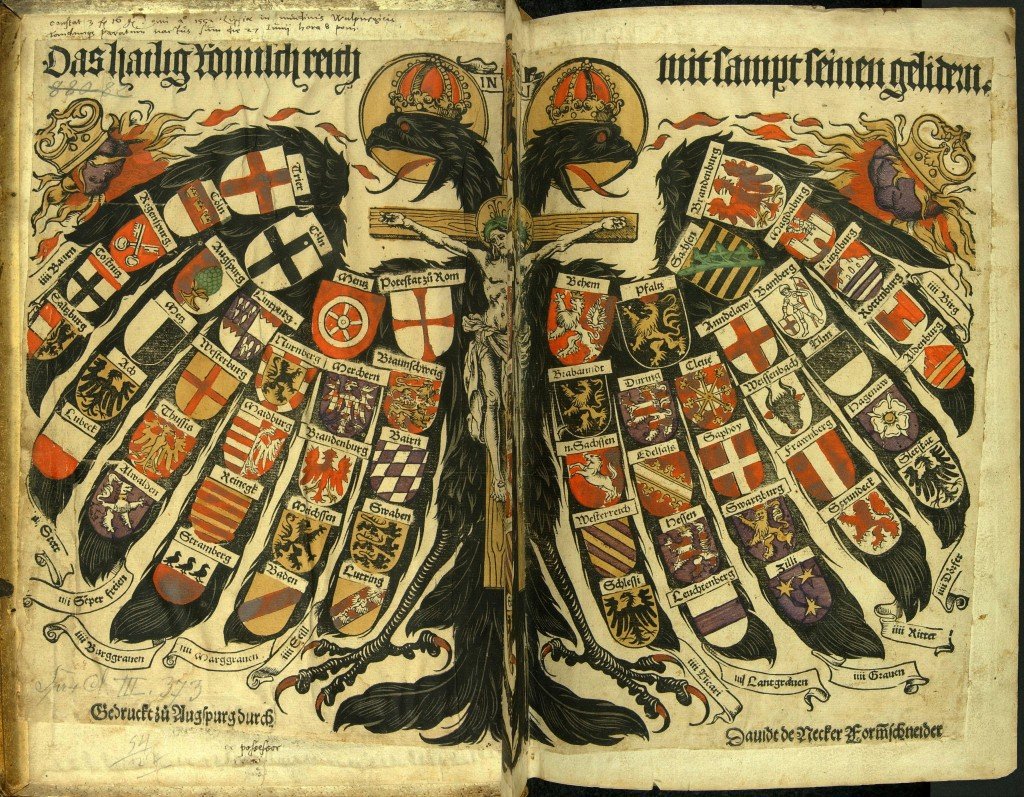
Roman Empire: Double-headed eagle. Source
The double-headed eagle became an important emblem used by countries, nations, and royal houses in Europe since the early Medieval times.
Some examples include the Holy Roman Empire, the House of Habsburg, the Byzantine House of Palaiologos, the Ruriks and Romanovs of Russia.
The symbol often appears on countries’ coats of arms and flags. The emblem was adopted by the Russians, Poles, Serbians, Prussians, Austrians, and Saxons. It was also used as a private seal and as arms in Germany, Russia, Spain, France, Netherlands, and England.
This symbol is depicted on knightly arms in England, the shield of Swabia dated to 1551, the crest of the Vienna city has also the symbol of the double-headed eagle.
The eagle with one body, one heart, and two heads is a very powerful ancient symbol that is believed to be one of the oldest in the world.
Written by – A. Sutherland AncientPages.com Senior Staff Writer
Copyright © AncientPages.com All rights reserved. This material may not be published, broadcast, rewritten or redistributed in whole or part without the express written permission of AncientPages.com
Expand for referencesReferences:
Smith Williams H. The Historians' History of the World Vol.1
Jesse D. Chariton - The Mesopotamian Origins of the Hittite Double-Headed Eagle
More From Ancient Pages
-
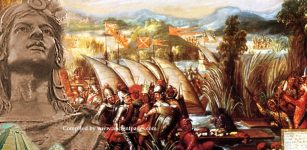 Cuauhtémoc: Brave And Determined Ruler Of Tenochtitlan And The Last Aztec Emperor
Featured Stories | Feb 28, 2018
Cuauhtémoc: Brave And Determined Ruler Of Tenochtitlan And The Last Aztec Emperor
Featured Stories | Feb 28, 2018 -
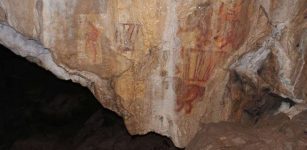 Astonishing Upper Paleolithic Camel Cave Painting Discovered In The Ural Mountains
Archaeology | Nov 28, 2017
Astonishing Upper Paleolithic Camel Cave Painting Discovered In The Ural Mountains
Archaeology | Nov 28, 2017 -
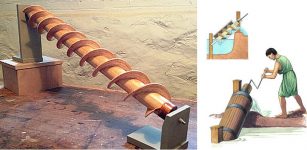 Archimedes’ Screw: Ancient Invention Used To Transfer Water To Higher Levels
Ancient History Facts | Aug 30, 2018
Archimedes’ Screw: Ancient Invention Used To Transfer Water To Higher Levels
Ancient History Facts | Aug 30, 2018 -
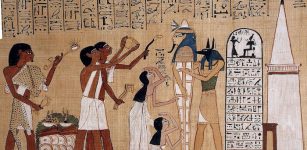 Evidence From Ancient Egypt Shows Smallpox Stretches Back At Least 3,000 Years
Archaeology | Jan 11, 2023
Evidence From Ancient Egypt Shows Smallpox Stretches Back At Least 3,000 Years
Archaeology | Jan 11, 2023 -
 New Species Of Stegosaur Is Oldest Discovered In Asia, And Possibly The World
Fossils | Mar 7, 2022
New Species Of Stegosaur Is Oldest Discovered In Asia, And Possibly The World
Fossils | Mar 7, 2022 -
 Mysterious Ancient Danube Stone Faces And The Fish Goddess Connection
Artifacts | Dec 18, 2019
Mysterious Ancient Danube Stone Faces And The Fish Goddess Connection
Artifacts | Dec 18, 2019 -
 What Was Asphalt Doing On A 9,000-Year-Old Skull Discovered In The Judean Desert
Archaeology | Feb 1, 2022
What Was Asphalt Doing On A 9,000-Year-Old Skull Discovered In The Judean Desert
Archaeology | Feb 1, 2022 -
 Mystery Of The Medieval ‘Out Of Time’ Village In England
Featured Stories | Mar 21, 2024
Mystery Of The Medieval ‘Out Of Time’ Village In England
Featured Stories | Mar 21, 2024 -
 King Solomon’s Copper Mines In The Timna Valley Did Not Pollute Environment – Geochemical Surveys Reveal
Archaeology | Dec 23, 2024
King Solomon’s Copper Mines In The Timna Valley Did Not Pollute Environment – Geochemical Surveys Reveal
Archaeology | Dec 23, 2024 -
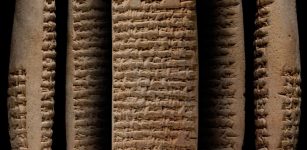 Mystery Of The Proto-Elamite Tablets – Cracking The World’s Oldest Undeciphered Writing
Artifacts | Oct 29, 2012
Mystery Of The Proto-Elamite Tablets – Cracking The World’s Oldest Undeciphered Writing
Artifacts | Oct 29, 2012 -
 Outstanding Discovery Of Unique Swords From The Viking Age Near Gausel Queen’s Grave
Archaeology | Jun 3, 2022
Outstanding Discovery Of Unique Swords From The Viking Age Near Gausel Queen’s Grave
Archaeology | Jun 3, 2022 -
 Prehistoric Feces At Stonehenge Reveal The Earliest Evidence For Intestinal Parasites In The UK
Archaeology | May 21, 2022
Prehistoric Feces At Stonehenge Reveal The Earliest Evidence For Intestinal Parasites In The UK
Archaeology | May 21, 2022 -
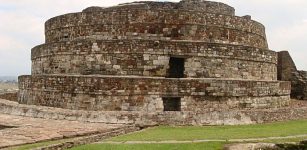 Ehecatl: The Snake-Bird Deity And God Of Wind Feared And Respected By The Aztecs
Aztec Mythology | Aug 26, 2016
Ehecatl: The Snake-Bird Deity And God Of Wind Feared And Respected By The Aztecs
Aztec Mythology | Aug 26, 2016 -
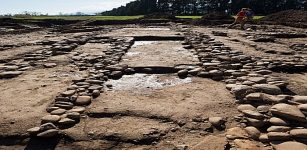 Sanctuary Of God Mithra And His Mysterious Religion Unearthed In Corsica
Archaeology | Mar 2, 2017
Sanctuary Of God Mithra And His Mysterious Religion Unearthed In Corsica
Archaeology | Mar 2, 2017 -
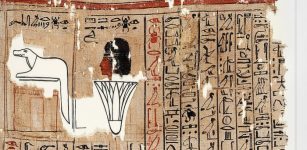 A Magical Handbook For The Afterlife – Insights To Ancient Egyptian Religion, Magic And Secret Knowledge
News | Jul 11, 2023
A Magical Handbook For The Afterlife – Insights To Ancient Egyptian Religion, Magic And Secret Knowledge
News | Jul 11, 2023 -
 Mystery Of The Horrible ‘Thing’ Found In A Dominican Monastery
Featured Stories | Sep 4, 2023
Mystery Of The Horrible ‘Thing’ Found In A Dominican Monastery
Featured Stories | Sep 4, 2023 -
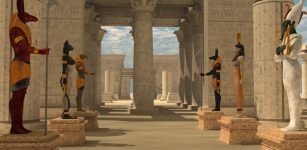 Zep Tepi – When Gods Established Their Kingdom On Earth In Egypt
Egyptian Mythology | May 23, 2021
Zep Tepi – When Gods Established Their Kingdom On Earth In Egypt
Egyptian Mythology | May 23, 2021 -
 Massive Roman-Era Column Base Of Limestone Unearthed In The Foothills Of Mount Hermon, Golan Heights
Archaeology | Oct 29, 2022
Massive Roman-Era Column Base Of Limestone Unearthed In The Foothills Of Mount Hermon, Golan Heights
Archaeology | Oct 29, 2022 -
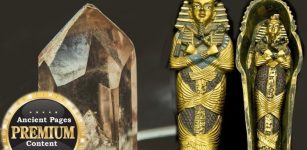 Lost Knowledge Of Energy And Crystal Technology In Ancient Egypt
Ancient Technology | May 17, 2019
Lost Knowledge Of Energy And Crystal Technology In Ancient Egypt
Ancient Technology | May 17, 2019 -
 Has The Burial Place Of Mysterious Dark Age King Cerdic Of Wessex Been Located?
Archaeology | Apr 23, 2024
Has The Burial Place Of Mysterious Dark Age King Cerdic Of Wessex Been Located?
Archaeology | Apr 23, 2024

